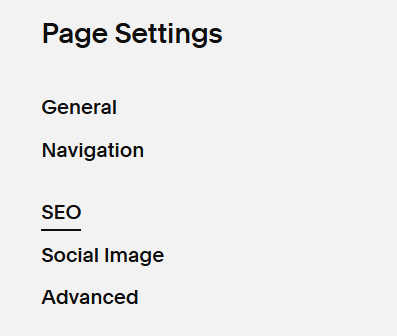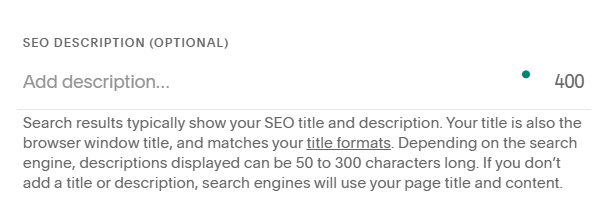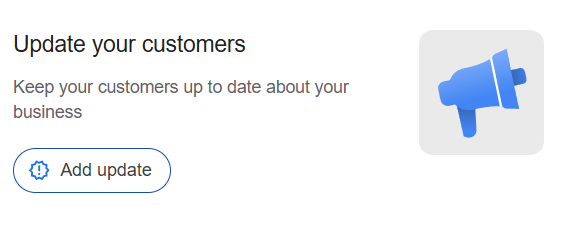Simple Steps for Squarespace SEO

Having an online presence is essential for local businesses. However, navigating Squarespace digital marketing and Search Engine Optimization (SEO) can be overwhelming, especially if you’re just starting out.
That’s why we’ve put together this easy-to-follow guide to help you optimize your Squarespace website for better organic performance without breaking the bank.
1. Familiarize Yourself with Keywords and Keyword Research Techniques
Understanding the keywords your potential customers use is the first step toward effective SEO. This knowledge helps you tailor your website content to match what people are searching for.
Choose keywords that are relevant to your business and have a good balance between search volume and competition. Focus on long-tail keywords (phrases with three or more words) since they are usually less competitive and more specific to your offerings.
How to Do It
Begin by identifying the words and phrases your potential customers use when searching for products or services like yours. Here’s a simple way to start:
-
Brainstorm
List down terms related to your business, products, services, and location.
-
Use Tools
Utilize free keyword research tools such as Google Keyword Planner, Ubersuggest, or AnswerThePublic to find popular keywords.
-
Analyze Competitors
Look at the keywords your competitors are targeting by visiting their websites or using tools like SEMrush.
Why You're Doing It
Keywords are the foundation of SEO.
By targeting the right keywords, you ensure that your website appears in search results when potential customers are looking for what you offer. This increases your chances of attracting organic traffic and converting visitors into customers.
2. Set Page SEO Titles and SEO Descriptions
Optimizing your page titles and descriptions helps search engines understand the content of your pages and improves how your site appears in search results.
Each page needs a unique SEO title and description. Incorporate your primary keywords naturally, and make sure the titles and descriptions accurately reflect the page's content.
How to Do It
Squarespace makes it easy to set SEO titles and descriptions for each page:
-
Log In
Access your Squarespace account and navigate to the page you want to optimize.

-
Page Settings
Click the gear icon (⚙️) next to the page name to open Page Settings.

-
SEO Tab
Go to the “SEO” tab within Page Settings.

-
SEO Title
Enter a concise and descriptive title for the page (up to 70 characters).

-
SEO Description
Write a compelling description (up to 160 characters) that includes your primary keywords.

Why You're Doing It
SEO titles and descriptions are what appear in search engine results.
A well-crafted title and description can improve your click-through rate, making users more likely to visit your website. They also help search engines understand what your page is about, which can improve your rankings.
3. Set Image File Names to Reflect Image Alt Text
Properly setting image alt text enhances both SEO and accessibility, making your website more user-friendly and search-engine optimized.
Use clear and specific alt text for all images on your site. Avoid generic descriptions like “image1” or “photo,” and ensure that the alt text accurately describes the image content while incorporating relevant keywords naturally.
How to Do It
Optimizing images is a crucial part of SEO. Here’s how to set meaningful file names and alt text:
-
Upload Images
When adding images to your Squarespace site, ensure they are relevant and high-quality.
-
Edit Image Settings
Click on the image to open the image editor.
Click the pencil icon (✏️) to edit the image.

In the “Content” tab, find the “Alt Text” field.

Enter a descriptive alt text with relevant keywords (e.g., “Handmade leather wallet with multiple compartments”).
Why You're Doing It
Search engines can’t “see” images but can read the alt text.
Optimizing alt text helps search engines understand your images, which can improve your site’s visibility in image search results. Additionally, alt text enhances accessibility for visually impaired users, providing a better browsing experience.
4. Rename Image File Names to Reflect Image Alt Text
Making sure your image file names are descriptive and consistent with your alt text further optimizes your site's SEO.
Always rename your image files directly within Squarespace to include primary keywords related to the image and your content. Use hyphens to separate words for better readability by search engines.
How to Do It
Renaming image file names directly within Squarespace is easy:
-
Edit Image Settings
Click on the image to open the image editor.
Click the pencil icon (✏️) to edit the image.
-
Rename the File
In the image editor, locate the alternate file name field.

Enter a new, descriptive file name with relevant keywords, using hyphens to separate words (e.g., blue-vintage-sofa.jpg).
-
Update Alt Text (if necessary)
Make sure the alt text matches or complements the new file name for maximum SEO benefit.
Why You're Doing It
Consistent and descriptive file names help search engines index your images more effectively.
This boosts your website’s SEO and enhances user experience by providing clear context for each image. Renaming files within Squarespace saves time and avoids the hassle of re-uploading images.
5. Regularly Publish New, Relevant Content!
Consistently adding fresh content to your website keeps it relevant and engaging for users and search engines.
Focus on creating high-quality, informative content that addresses the needs and interests of your audience. Incorporate your target keywords naturally and ensure your content is well-structured and easy to read.
How to Do It
Keeping your website updated with fresh content is key to maintaining and improving your SEO:
-
Blogging
Start a blog related to your business. Share tips, news, and insights that are valuable to your customers.
-
Product Updates
Regularly update your product or service pages with new information, features, or testimonials.
-
Content Calendar
Create a schedule to publish content consistently, whether it’s weekly, bi-weekly, or monthly.
Why You're Doing It
Search engines favor websites that regularly update their content.
Fresh content signals that your site is active and relevant, which can improve your rankings. Additionally, valuable content attracts and engages visitors, increasing the likelihood of conversions.
6. Make Sure Your Google My Business Listing is Accurate
An accurate Google My Business (GMB) listing enhances your local SEO and makes it easier for customers to find and contact you.
Regularly review and update your GMB listing to reflect any changes in your business. Add relevant categories, services, and products to enhance your listing’s visibility.
How to Do It
Google My Business (GMB) is a powerful tool for local SEO. Be sure to use it to the full extent!
-
Sign In
Go to Google My Business and sign in with your Google account.
-
Claim Your Business
If you haven’t already, claim your business listing by following the on-screen instructions.
-
Update Information
- Business Name: Ensure it matches your website and branding.
- Address: Verify that your address is correct.
- Phone Number: Use a local phone number.
- Website: Link to your Squarespace website.
- Hours of Operation: Keep your business hours up to date.
Why You're Doing It
An accurate GMB listing improves your visibility in local search results and Google Maps.
It provides essential information to potential customers, making it easier for them to find and contact your business. Additionally, a complete listing can enhance your credibility and trustworthiness.
7. Regularly Post Updates and Images to Google My Business
Keeping your Google My Business profile active with updates and images can significantly enhance your local SEO efforts.
Post updates about new products, special offers, events, or any news related to your business. Use high-quality images to make your posts more engaging and visually appealing.
How to Do It
Maintaining an active GMB profile involves regularly adding new posts and images:
-
Create Posts
Search for your business on Google.
Click on “Add update.”

Add a description, relevant images, and a button.

Publish the post.

-
Add Photos

Why You're Doing It
Regular posts and fresh images keep your GMB profile engaging and informative.
They signal to Google that your business is active, which can improve your local search rankings. Additionally, engaging content attracts more views and interactions from potential customers, increasing your chances of driving foot traffic and sales.
Rank Higher With Your Squarespace Site
Implementing these foundational SEO steps can set you on the right path toward improving your website’s visibility and attracting organic traffic.
Remember, SEO is an ongoing process, so stay consistent and keep learning to achieve the best results. If you need further assistance, don’t hesitate to reach out to Alopex — we’re here to help your business succeed online! Here are relevant services, Custom Squarespace Websites, and Search Engine Optimization.